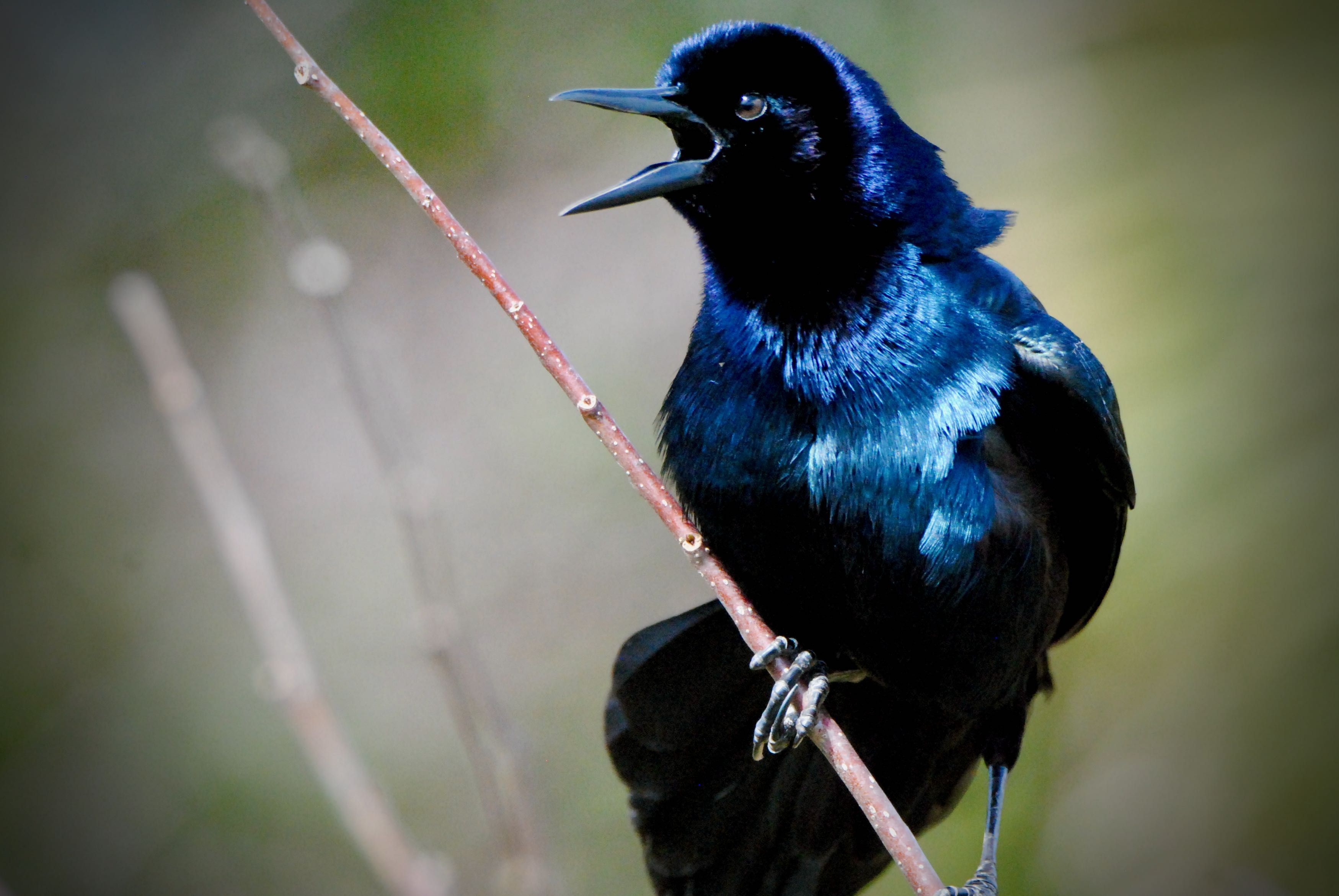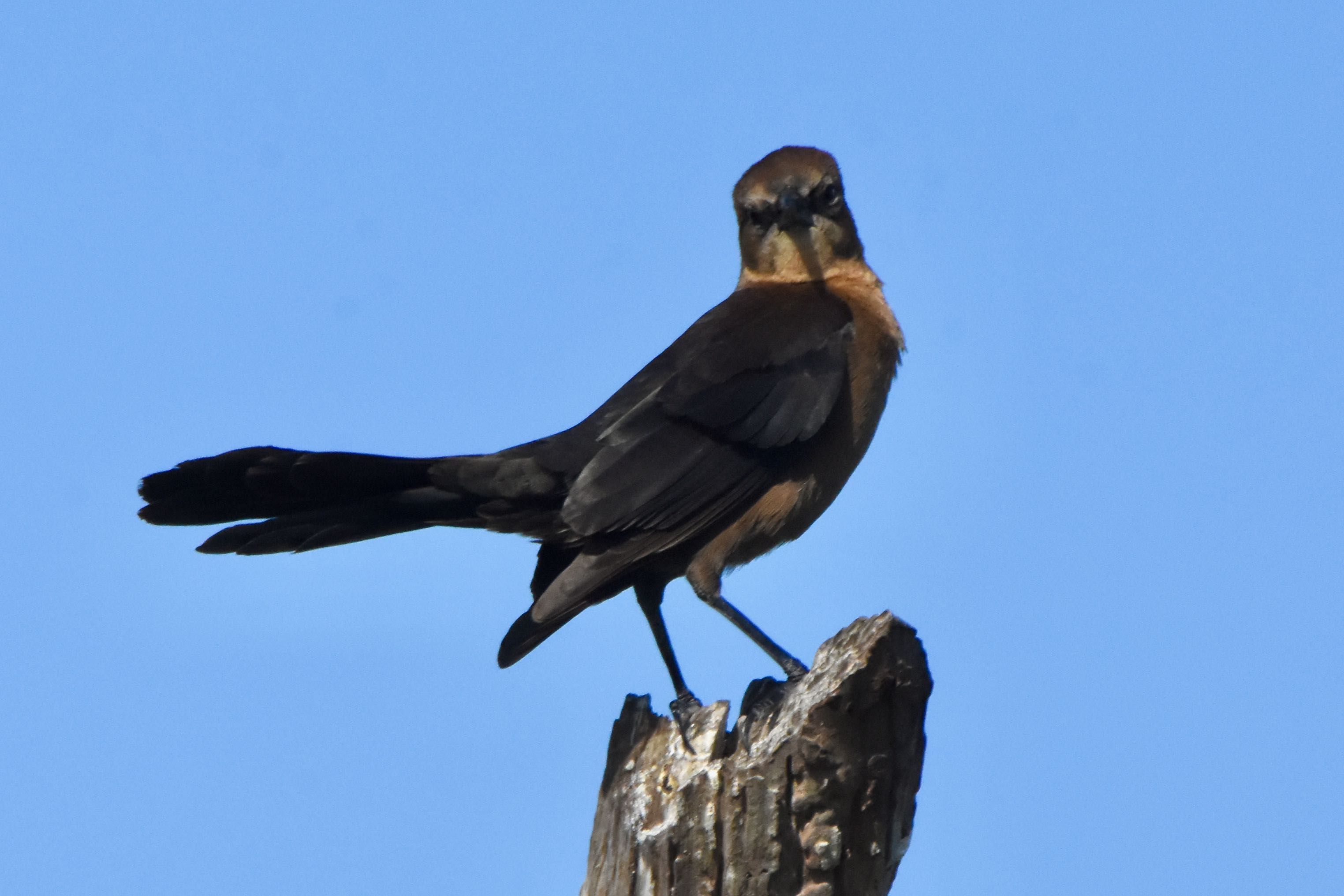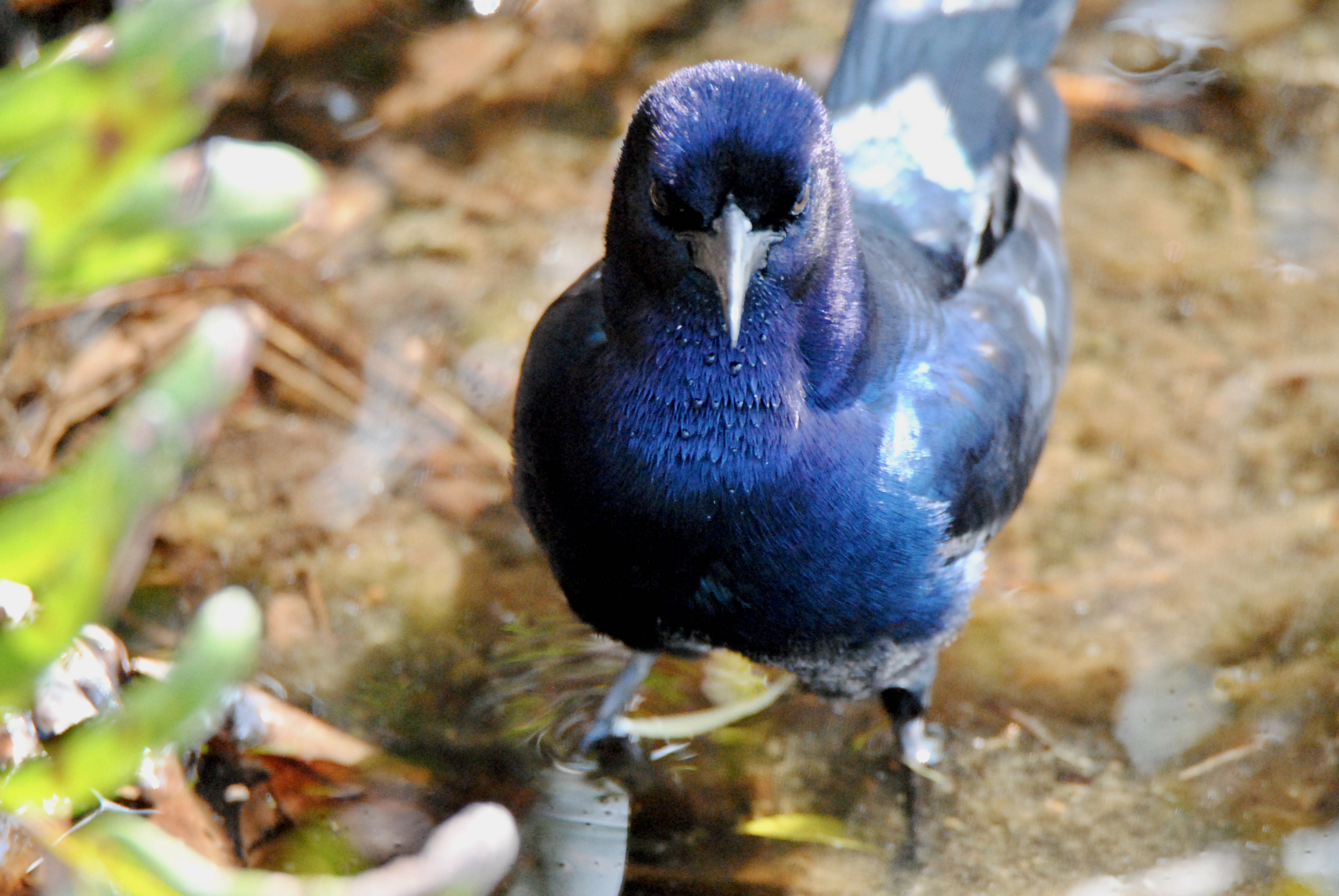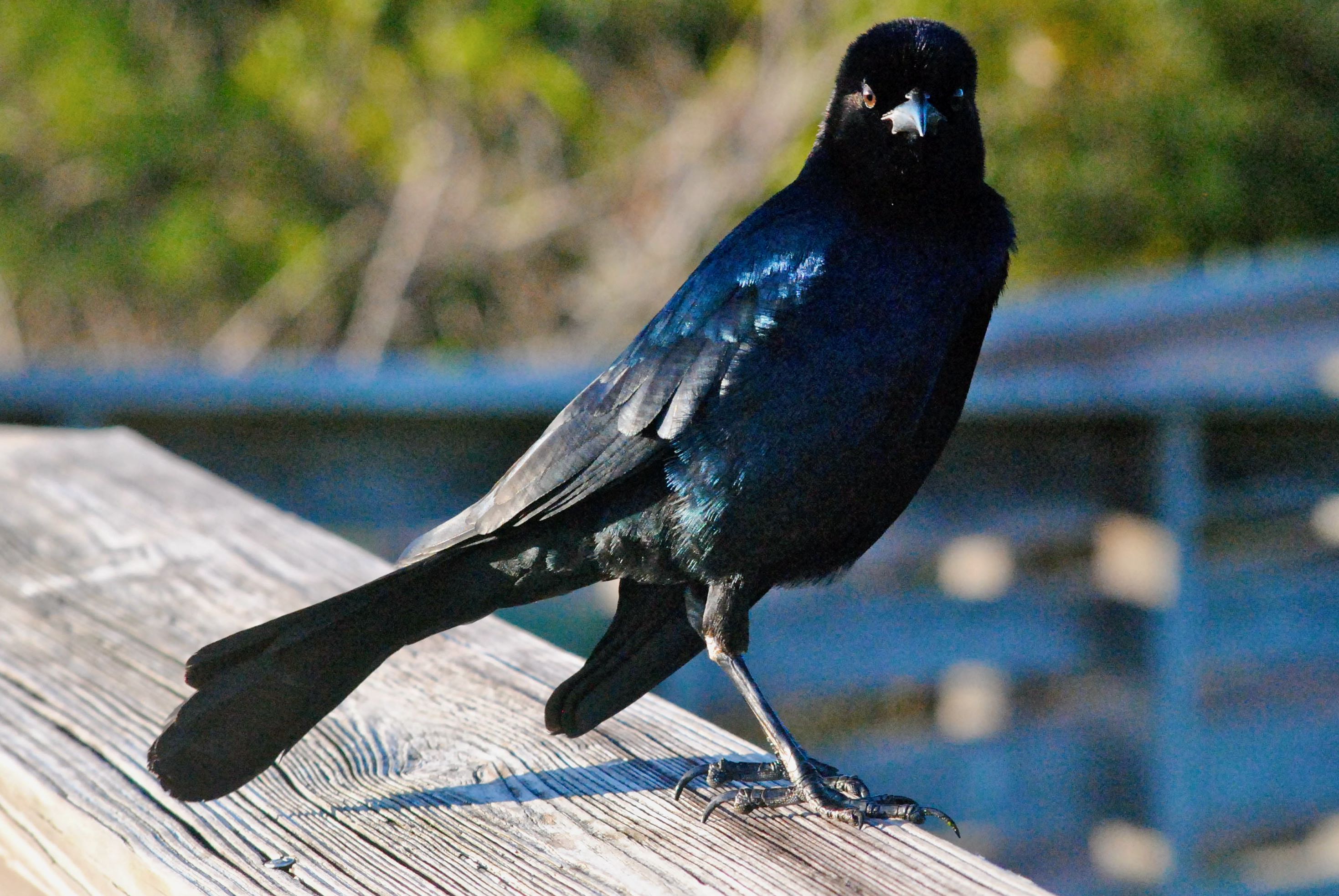
Boat-tailed grackle, photographed at Green Cay Nature Center, Boynton Beach, Palm Beach County, in February 2016.
The boat-tailed grackle might be one of the more underappreciated members of the avian world. For one, it's among, the most common birds around. Second is its looks, seemingly, uninterestingly all black. Third is its willingness to eat almost anything, including garbage. Be ever vigilant when eating outdoors if grackles are about or they're likely to steal your food. They might do it regardless.
And then there is its blasted unmelodious call. It's just noise to the human ear. Loud noise at that, especially when they gather in numbers as they're wont to do.
But Quiscalus major, as they're known to the scientific world, shouldn't be so easily dimissed. Yeah, there are a lot of them, but that's because as a species they're doing something right.
The reality is that this bird is anything but plain. In the right light, iridescent blues and greens become apparent, making the boat-tailed beautiful. Seriously.
And grackles actually have a fairly complex social structure. Boat-taileds form colonies, where males fight to be the king of the roost, so to speak, and the mating rights that go with it. While the top bird gets his share of the action, according to Cornell Laboratory of Ornithology, a lot goes on behind his back. Only about a quarter of the young of a given flock carry the DNA of the dominant male.
Boat-tailed grackles are large birds, with a body length of about 15 inches and a wingspan that can be 20 inches or more. Males are larger and darker than females, which have brown heads and necks and grayish bodies. Boat-taileds are more slender than crows and have a narrower bill. And of course, there's the long, long tail. Two birds look similar, the long-tailed grackle, which is found in Texas and Louisiana, and the common grackle, which is smaller and iridescent only on the head.
Boat-tailed's range extends along the Gulf and Atlantic coasts from Texas to New York and Connecticut. But only in Florida do they venture inland. Only in the northern-most portion of their range do they migrate.
Two grackle subspecies dominate the state, but a third may dip its toes, so to speak, in the western part of the Panhandle. Q. m. torreyi is found In the northeastern corner of the state, while Q. m. westoni is found everywhere else, including South Florida.
Although boat-tailed grackles have become part of the urban scene in Florida, they are by nature marsh birds, generally, nesting in tangles of bulrush, fireflag and similarly tall, reedy aquatic plants. Females build the nest, a cup made of sticks, weeds, grasses and Spanish moss. Clutches are generally two or three eggs, sometimes four, and require about two weeks of incubation; females do all the sitting. The young fledge in another two weeks. In Florida, nesting season runs from February into September, though some birds will breed afterwards.
Boat-tailed grackles forage near and in water for insects, snails, crayfish, frogs, fish and shrimp. They also eat seeds, scraps of food — we've seen them steal french fries from an occupied picnic table — and will take the eggs and young of other birds. They can be pesty in agricultural areas — farmers have been known to take pot shots at them even though they are protected under the Migratory Bird Species Act.
Boat-tailed populations are generally stable, but they do face a threat from declining habitat.
They are members of Icteridae, the blackbird and oriole family.
Green Cay Nature Center



